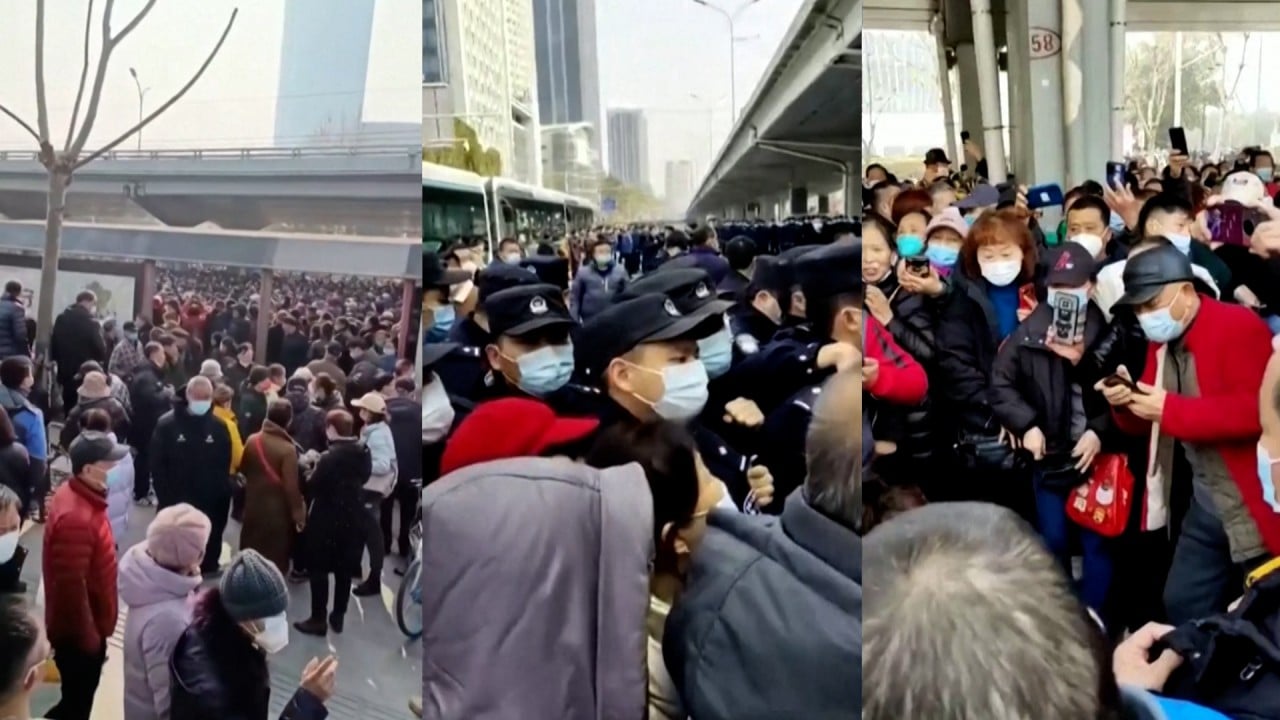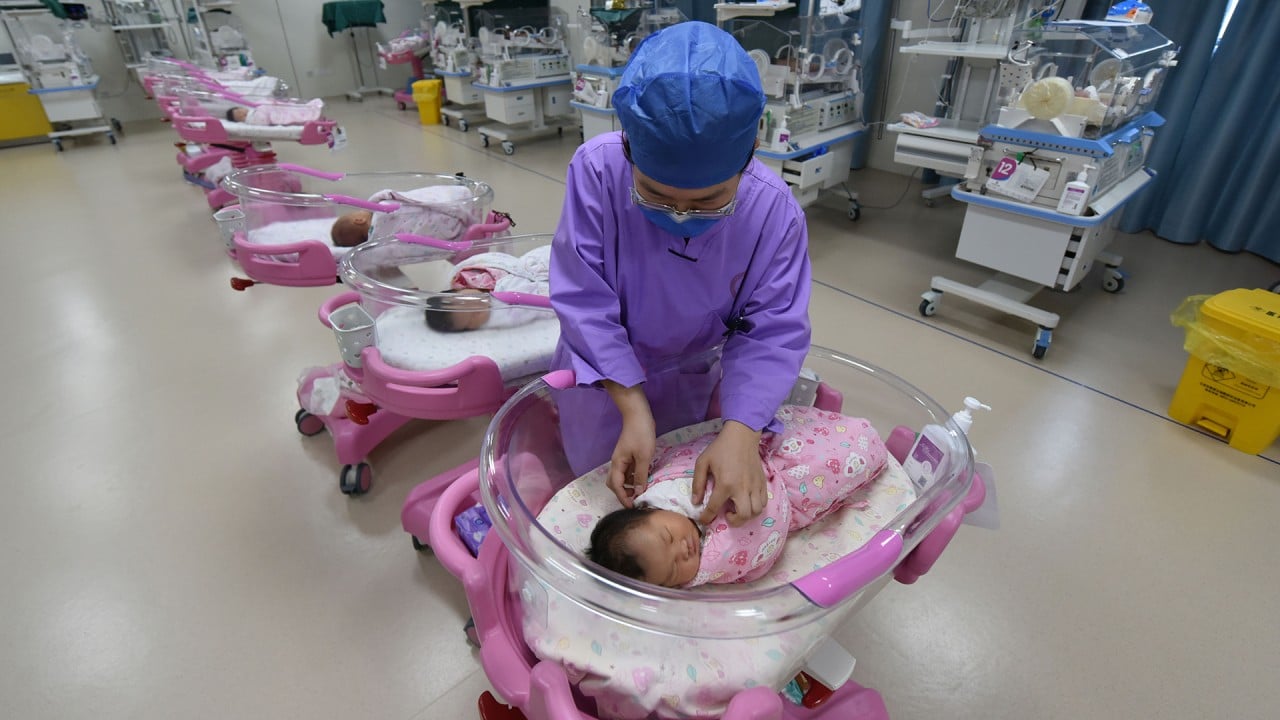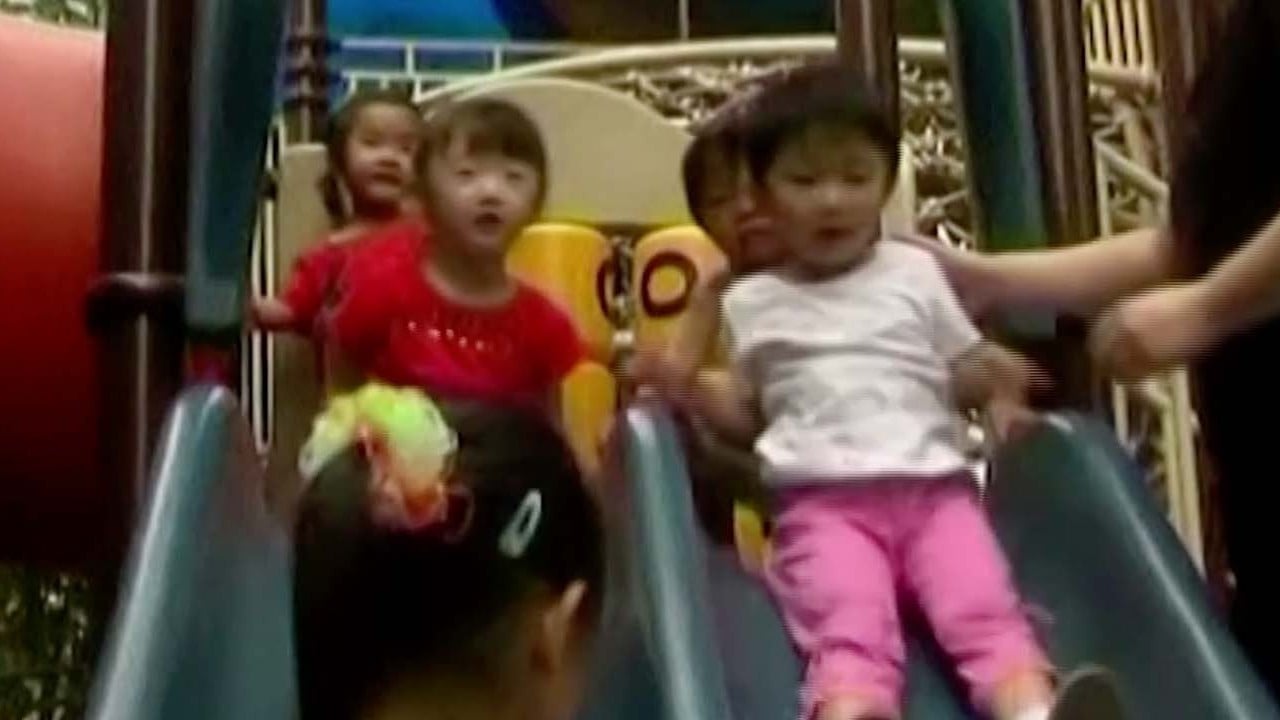
02:07
Chinese retirees hold rare protest over cuts in healthcare insurance
Chinese protests over health insurance cuts highlight risks from ageing population
- Scores of retirees have taken to the streets of Wuhan over the past week to protest against cuts to medical services, according to footage on social media
- The rare protests underscore the challenge facing Beijing as it comes to terms with a shrinking population and the sustainability of its social security system
Like many other residents in central China’s Wuhan city, Liu Meixiang was shocked when she found out her monthly healthcare payment had been cut by nearly two thirds earlier in February.
Usually the 66 year old receives 230 yuan (US$33) per month for her outpatient expenses, but when she checked her balance this month she had been paid just 83 yuan.
“It is a big loss especially to old people who suffer from chronic illness like me,” she said. “I feel our benefits are worsening, although our country is becoming richer.”
Similar frustration has drawn hundreds of retirees onto the streets of Wuhan over the past week to protest against cuts to medical services, according to reports and footage posted to social media.
Following a protest last week, Wuhan authorities issued several statements explaining the cuts were part of a nationwide effort to channel funds from individual medical insurance accounts to a communal pool that would ultimately allow higher reimbursement of outpatient costs.

The rare protests, the most recent of which was on Wednesday, underscore the challenge facing Beijing as it comes to terms with an ageing population, shrinking workforce and the long-term financial health of its social security system.
The sustainability of the fund – which covers pensions, medical insurance, unemployment insurance, work injuries and maternity insurance – is a concern and is expected to be an issue of focus at next month’s “two sessions” in Beijing.
Since 2013, the fund has witnessed an increasing deficit and is being propped up by government subsidies, official data showed.
Total revenue was about 7.4 trillion yuan in 2021, not including state subsidies, while expenditure was more than 8.6 trillion yuan, leading to a 1.2 trillion yuan shortfall, statistics from the Ministry of Finance showed.
In 2013, when the deficit first appeared, government subsidies accounted for 20 per cent of the fund’s revenue, which is mostly drawn from contributions by companies and employees and a small return on investment. By 2021, that ratio had increased to about 28 per cent.
The fund is becoming dependent on government subsidies, at least for the coming 30 years
“The fund is becoming dependent on government subsidies, at least for the coming 30 years,” said Shanghai-based economist Lin Caiyi, who is the vice-president of a research institute under the China Chief Economist Forum.
“Payouts will keep increasing with fewer newborns and more elderly people each year – we already saw a decline in the total population last year.”
Part of the fund is being used for investment to generate returns, but that has remained small due to concerns about risk and a limited level of expertise, said Lin.
“We’ve been investing it in stable but low-yielding products as we consider the top priority as safety, so the fund lacks self-sustaining ability,” she said.
China’s pension fund, the most important part of its social security system, is becoming less sustainable year by year, according to an annual report on local governments’ financial conditions published last month by Renmin University.
Including government subsidies, its surplus as percentage of revenue has been falling over the past 15 years, said professor Ma Guangrong from the university’s School of Finance, who led the study, at the launch event.
This ratio was around 23 per cent in 2008, and by 2021 it had dropped to 4 per cent, according to his team’s calculation.
There might be an uptick this year but against the backdrop of population ageing, “the fund is definitely facing more and more pressure in making ends meet”, he said.
Besides an older society, slowing economic growth is another major concern, said professor Fang Lianquan, who specialises in social security at the Chinese Academy of Social Sciences (CASS).
“Amid an economic slowdown, employees’ income drops and unemployment rises, which directly affects their contribution to the social insurance fund,” he said.
“For example, there were several rounds of suspensions and delays in the past few years due to the coronavirus.”
China’s pension fund saw a deficit of over 540 billion yuan in 2020 as the government tried to ease the financial burden of firms during the pandemic by exempting them from contributing to the fund for a few months.
“To avoid an enlarging hole, there must be reforms to broaden the sources of income and reduce expenditure,” Fang said.
One major policy response has been Beijing’s announcement it plans to delay the retirement age to curb the shrinking workforce, an initiative that has drawn strong public opposition.
The central government said early last year it intends to gradually raise the current retirement age – 60 for men, 55 for female office workers and 50 for female blue-collar workers – from 2025.
In the southern province of Guangdong, 10 people of working age are supporting 1.8 seniors, according to Ma from Renmin University, while in Heilongjiang in the northeast, the same number of workers need to provide for 7.8 retirees.
In 2018, Beijing started asking local governments to turn over a portion of their pension revenue to be reallocated to those regions that were having trouble paying retirees.
At the same time, China is pushing a new private pension scheme – internationally known as the third pillar of a pension system – that encourages individuals to make voluntary deposits and invest them in stable financial products.
Chinese are only covered by the first and second pillars – the basic state pension and the voluntary fund provided by their employer.
“The 14th five-year plan period [2021-25] will be a new era of accelerating population ageing, increasing complexity in the spectrum of diseases, and growing medical demands and costs,” said Ge Yanxia, a researcher specialising in demography at the CASS.
It is necessary to expand the collective account to ensure the sustainability of the medical insurance fund under such circumstances, she said.
China’s state healthcare insurance plan consists of two accounts – one individual account that has a small amount of receipts, which can be spent on outpatient services and pharmacies. The second is a collective account where major contributions go, mainly for reimbursement at inpatient services.
Though recipients of healthcare insurance have a certain level of flexibility as to how to spend money in individual accounts, it is meant for healthcare only, Ge said.
“But we’ve seen so many media reports about how individuals cash in on this fund by making fake transactions,” she said.
In 2020-21, more than 20 billion yuan from individual accounts was spent on buying medicine in pharmacies, which regulators were unable to supervise, she said.
In the meantime, huge sums of money have been left idle in the individual accounts of younger and healthier people.
I don’t believe in the government’s claim that the cuts will finally help us make more savings.
“Experts and officials have been discussing the reform many years ago, but implementation has been delayed as there has been quite much public pressure,” said Ge.
“The cuts in the individual accounts don’t equal deductions to benefits, because there will be reimbursement of at least 50 per cent of outpatient costs, which wasn’t available in the past.”
Despite the assurances, the pace of reform has come as a surprise to retirees like Liu in Wuhan, who believe the money in their individual accounts qualifies as a personal asset.
“I don’t believe in the government’s claim that the cuts will finally help us make more savings. It should provide extra funding if it wants to enlarge the communal pool, not cut receipts at our personal accounts,” she said.



